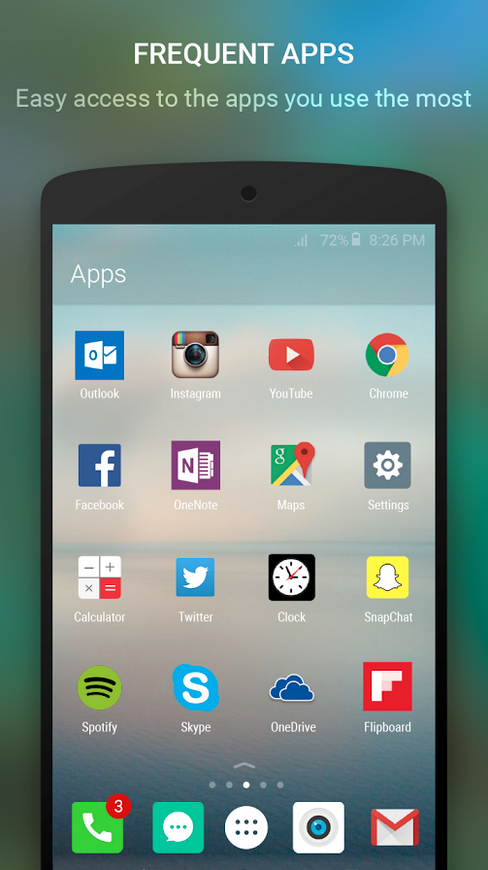
Microsoft promises that its latest Android app will make it easier than ever to find commonly used apps without having to dig through your phone.
The app, called Arrow, became available on Oct. 28 and is one of the many Android launchers available for free in the Google Play Store. An Android launcher is an app that changes the way the standard home screen looks and feels. Often, launchers will add new features and shortcuts that wouldn’t normally be there.
With Arrow, Microsoft aimed to make it easy for users to find the apps they use most frequently, arranging apps accordingly. For example, if a user opens Facebook more than she launches Snapchat each day, Facebook would appear higher on the list. There’s also a shortcut that allows users to access contacts they message or call most often with a single swipe.
Arrow comes with one feature that looks a lot like the Control Center in iOS (i.e. the settings shortcut menu accessible on the iPhone by swiping up from the bottom of the screen). Microsoft calls this addition the dock, and it’s meant to house favorite apps and settings.
It has the same transparent design as the Control Center, and features a slider that allows the user to control how bright the phone’s screen is. This dock also includes other settings shortcuts that are found in the iPhone’s Control Center, such as airplane mode, Bluetooth, Wi-Fi, and the flashlight. The main difference between Arrow’s dock and iOS’ Control Center is that the user can customize this dock and app apps to it.

Arrow is one of many Android launchers available in the Google Play Store—some are more tailored to changing the design of an Android phone’s software, while others are more focused on adding new shortcuts and easier ways to access apps. Microsoft’s latest launcher falls into the latter category, along with Yahoo’s Aviate launcher which claims to anticipate which apps a user needs based on location and time of day.
The launcher came out of Microsoft’s Garage division, the company’s experimental research and development branch. It’s also indicative of Microsoft’s broader strategy to expand into mobile by creating apps and services for popular platforms outside of Windows Phone, such as iOS and Android. Microsoft released another app for Android last February called Picturesque, which constantly switches out the lock screen background on Android phones. It also released a handful of its popular services, such as Outlook, as apps for the iPhone over the past year.
More Must-Reads from TIME
- Donald Trump Is TIME's 2024 Person of the Year
- Why We Chose Trump as Person of the Year
- Is Intermittent Fasting Good or Bad for You?
- The 100 Must-Read Books of 2024
- The 20 Best Christmas TV Episodes
- Column: If Optimism Feels Ridiculous Now, Try Hope
- The Future of Climate Action Is Trade Policy
- Merle Bombardieri Is Helping People Make the Baby Decision
Contact us at letters@time.com